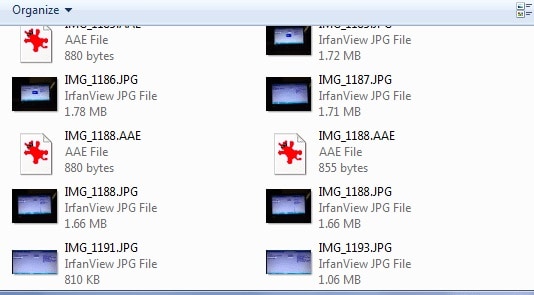If you’ve ever looked through your photos, you’ve probably noticed some with the file extension AAE. The image’s filename could be IMG_12345.AAE on an Apple device. On a Windows computer, the file extensions may not be visible by default. Consequently, the image file name will be IMG_12345, and the icon preview will be blank. Windows users may be baffled by this. Upon attempting to open the file, you will receive a message stating something along the lines of “Windows cannot open this file.”

What is an AAE File Extension
An AAE file on iPhone is a JPEG file extension that contains any modification data. It includes the edits made to an existing photo on an Apple device. You can delete an .AAE file without erasing the original image, but you will lose any edits you have made to the file. The edited data is saved in XML format and viewed in a text editor such as Notepad.
This file extension, as previously stated, is native to Apple devices and computers, explicitly iOS 8 and later and Mac OS 10.10 and later. Therefore, if you transfer a photo with this file extension to a Windows computer, the file will transfer as a regular old JPEG with no edits.
Previously, any changes you made to a photo would be overwritten by the original when using an older version of iOS. Well, with the creation of an AAE file, this is no longer the case. Making a change does not affect the original file; instead, it creates a new AAE file that contains the edit instructions (also called the AAE sidecar file.) Instead of having a .JPG file extension, AAE files are saved with an extension of .AAE is in the same folder as their original JPG counterparts.
How To Open AAE File Extension?
Do you have any plans for these documents? Emailing yourself a finished photo after editing it on your iOS device is the quickest and easiest method. By doing this, the changes you’ve made to the image will be permanently sealed. However, other options, such as posting it to Facebook or Instagram (or a similar service), degrades the image quality.
These files are currently inaccessible on Windows or Android devices, as previously stated. We have no idea when it will be possible to make use of them. These files can be safely deleted if you so desire. Even if they are no longer valid, keeping them in case they come in handy later is a good idea. These files are tiny and take up very little disc space.
ALSO SEE: Zoom Unstable Internet Connection
To what extent do you think Apple has made progress by creating these files? Even though I’m glad the original photo is no longer being overwritten, it seems more logical to ask us if we WOULD LIKE to overwrite it or save it separately. It may help to save some room as well as clear up some ambiguity.



